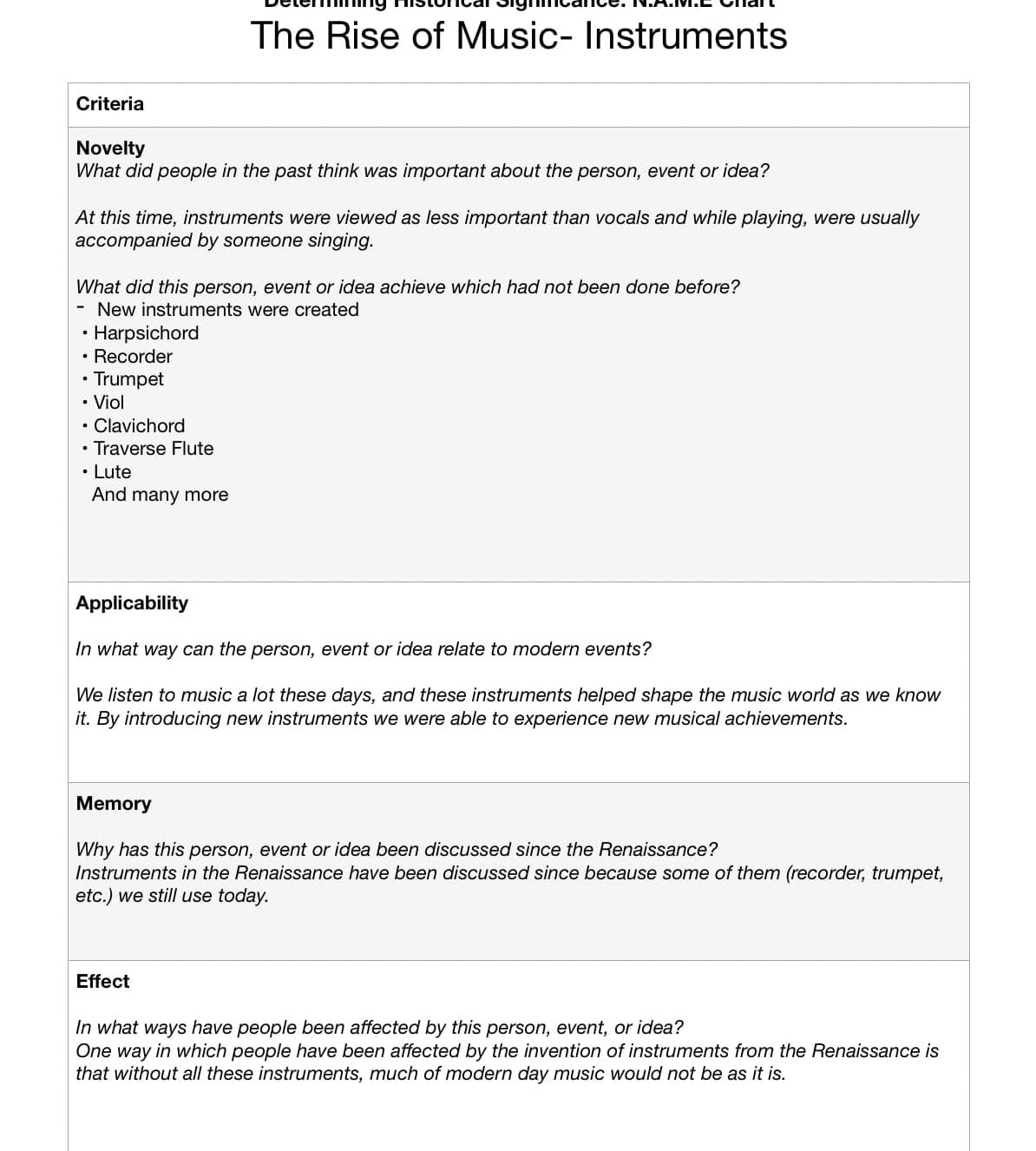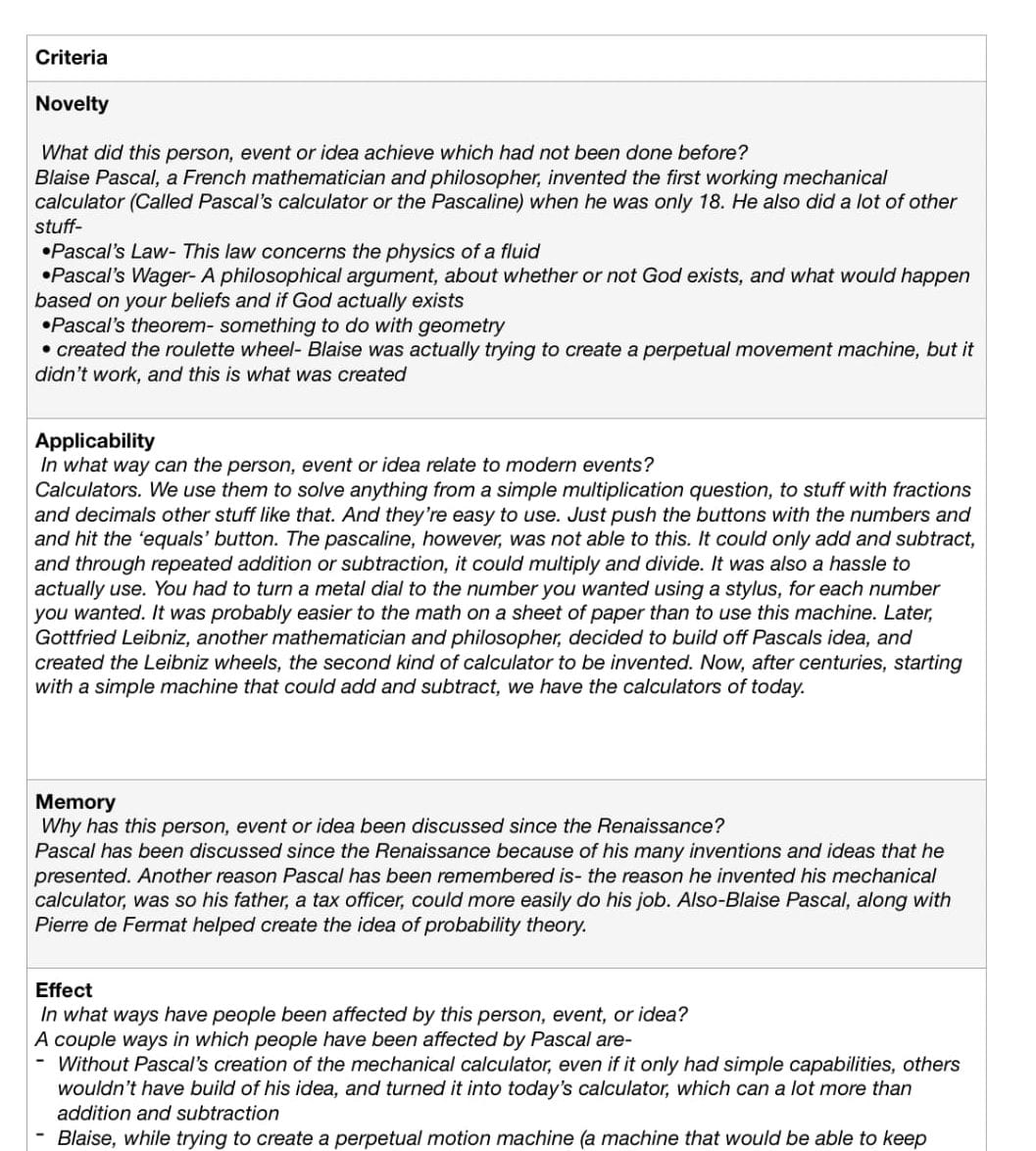Today’s post will be about the Renaissance.
In this project, we learned how to determine historical significance. This is how important it was at the time and how it affects the world today. The final goal for this project was to create a triptych and write a paragraph about an art piece, invention, person or societal change which we thought was the most historically significant thing in the Renaissance.
We couldn’t just magically write an amazing paragraph without doing any research, we had to fill out NAME charts. NAME stands for Novelty, Applicability, Memory, and Effects. We were given this list:
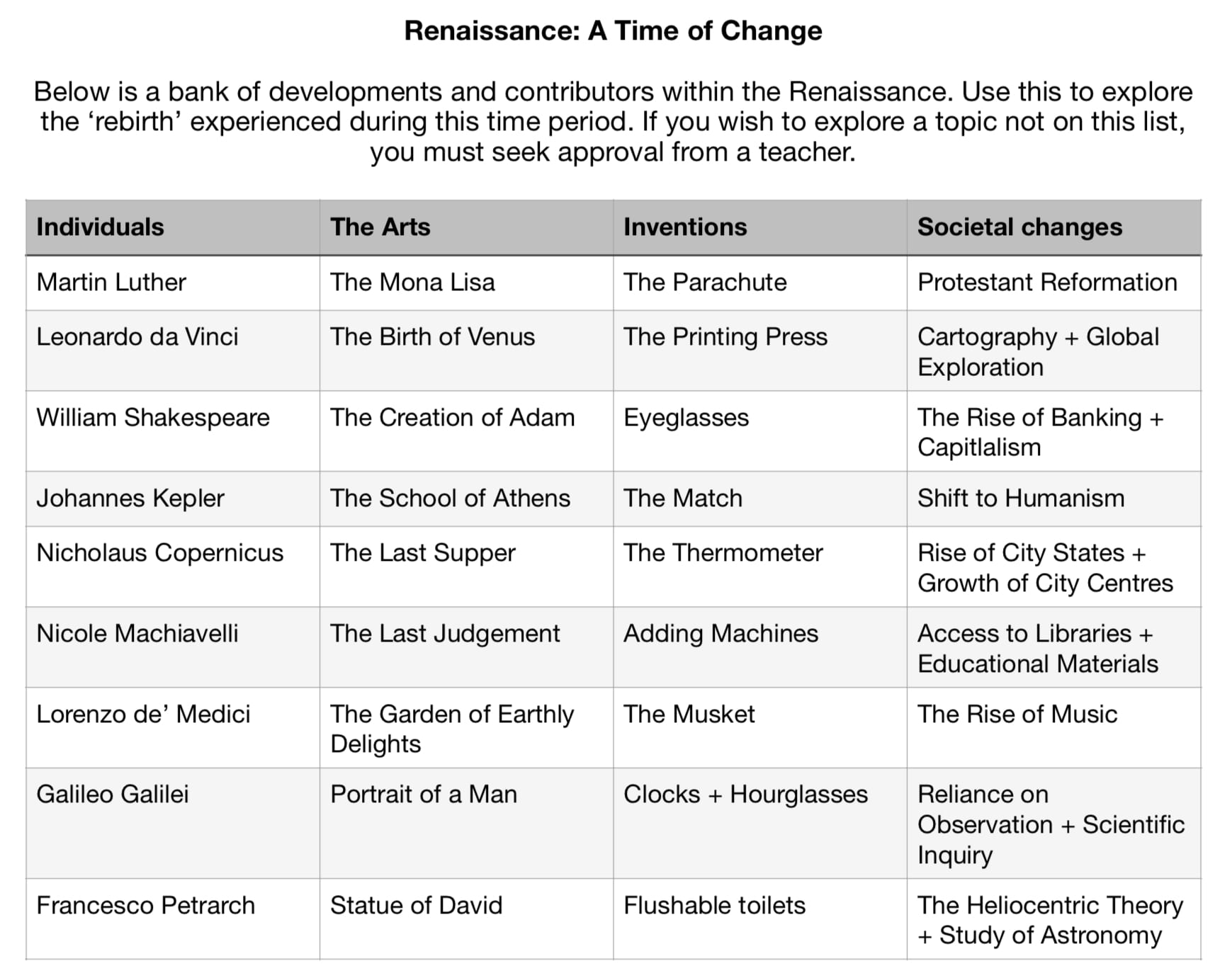
And were told to pick one from each column, and complete a NAME chart for it. The ones I chose were: The School of Athens, adding machines, and the rise of music (this is a big topic so I just did instruments in the Renaissance). The individual that I ended up choosing (Blaise pascal) was not on the list, so I had to ask a teacher. Here are my four NAME charts:
For the paragraph, I chose Blaise Pascal. Pascal was a mathematician and philosopher. He invented the calculator, the roulette wheel, and did a lot of stuff with math probability theory. Below, is my final paragraph:
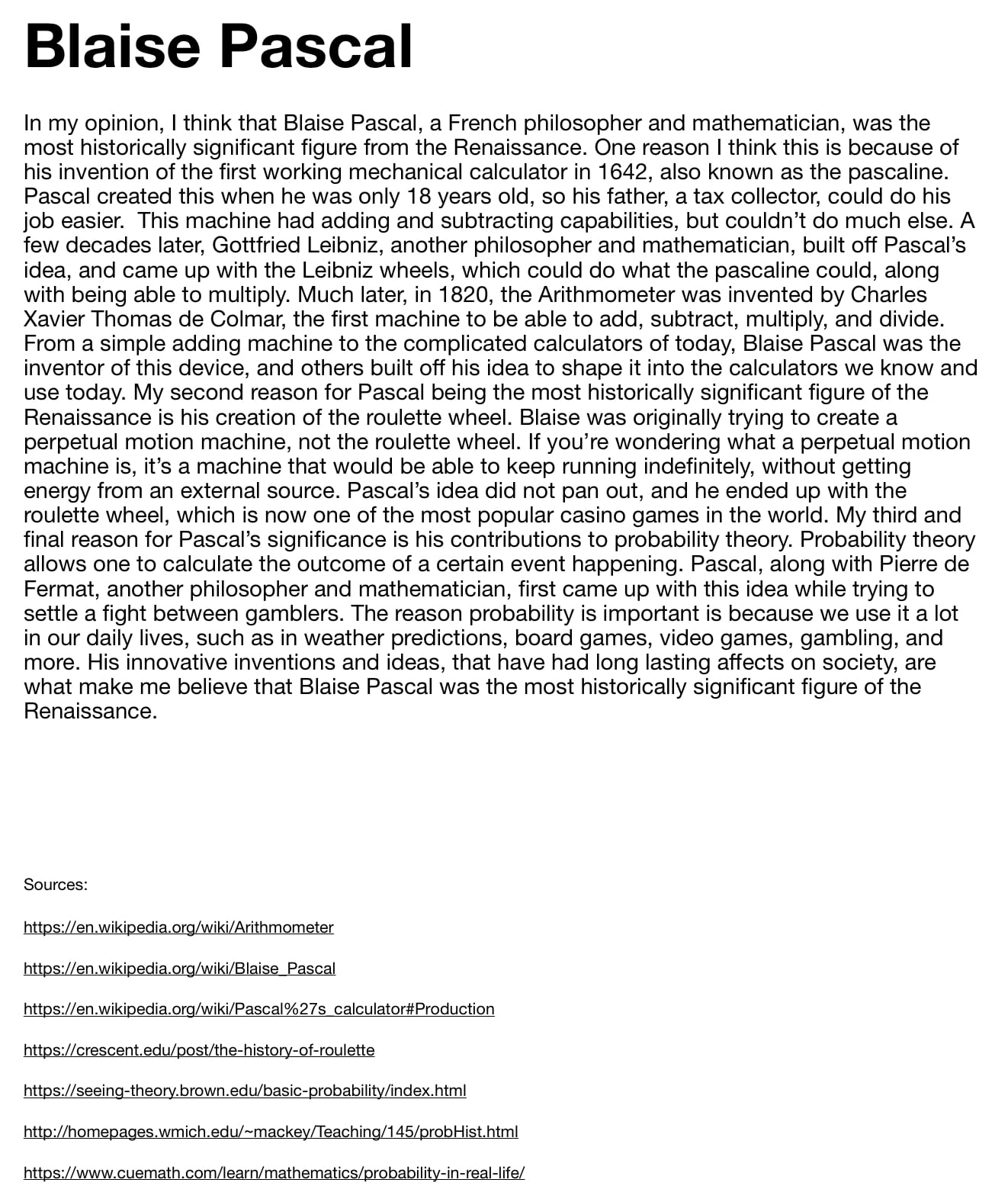
Before we could make our triptych (which had to include: an innovator, an innovation, an artistic accomplishment, a societal change, and a picture of yourself in the middle), we first had to learn how to use an app called Super Impose X. Using this, you could mask, blend, and layer images.
Here’s mine:
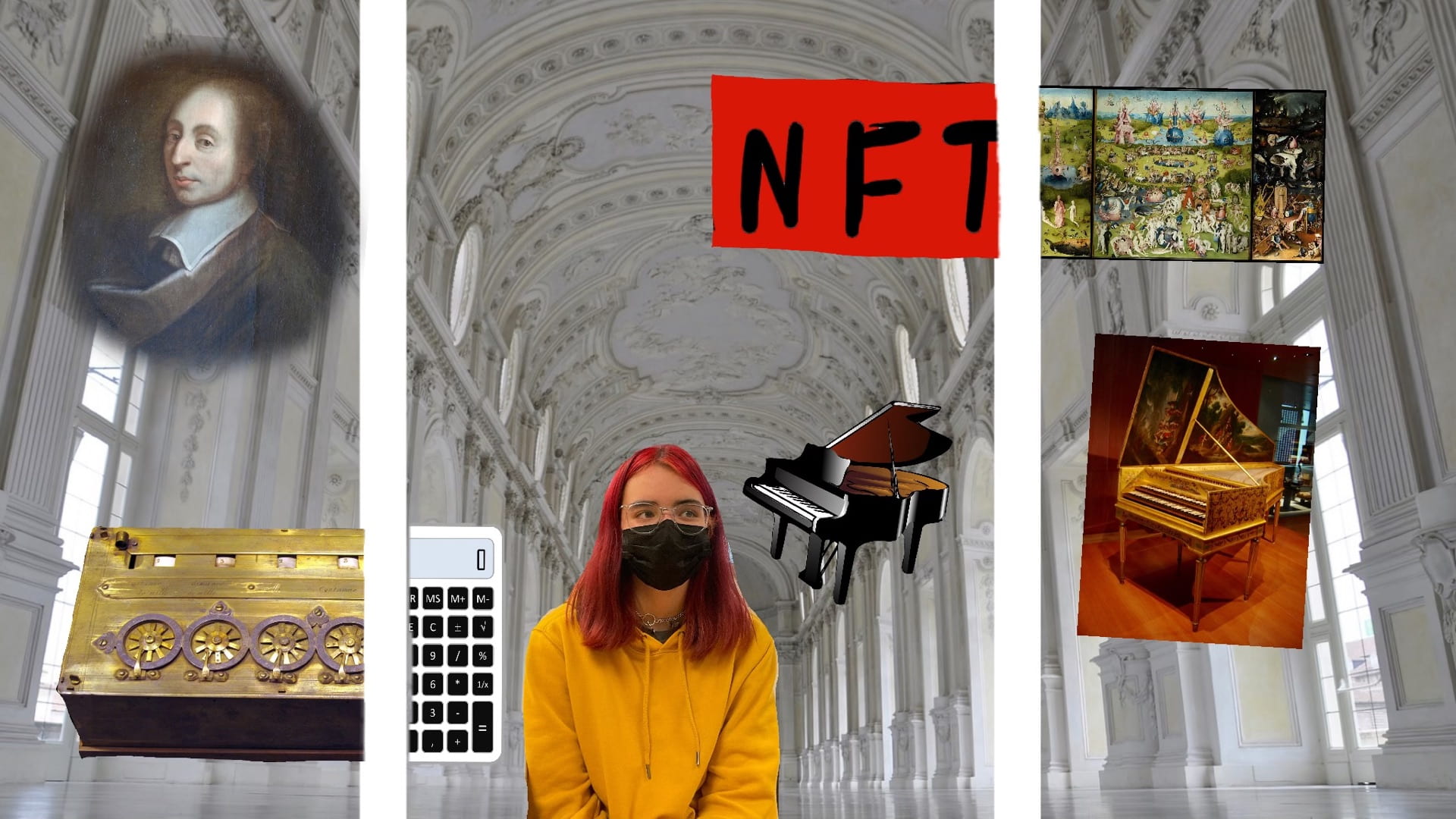
Throughout this project, I’ve learned how to determine historical significance, how to use Super Impose X to create a triptych, and how to fill out a NAME chart. I’m happy with how my paragraph turned out, but I think I should’ve spent more time on my triptych.
I can’t think of anything else to say, so-
Thanks for reading!

